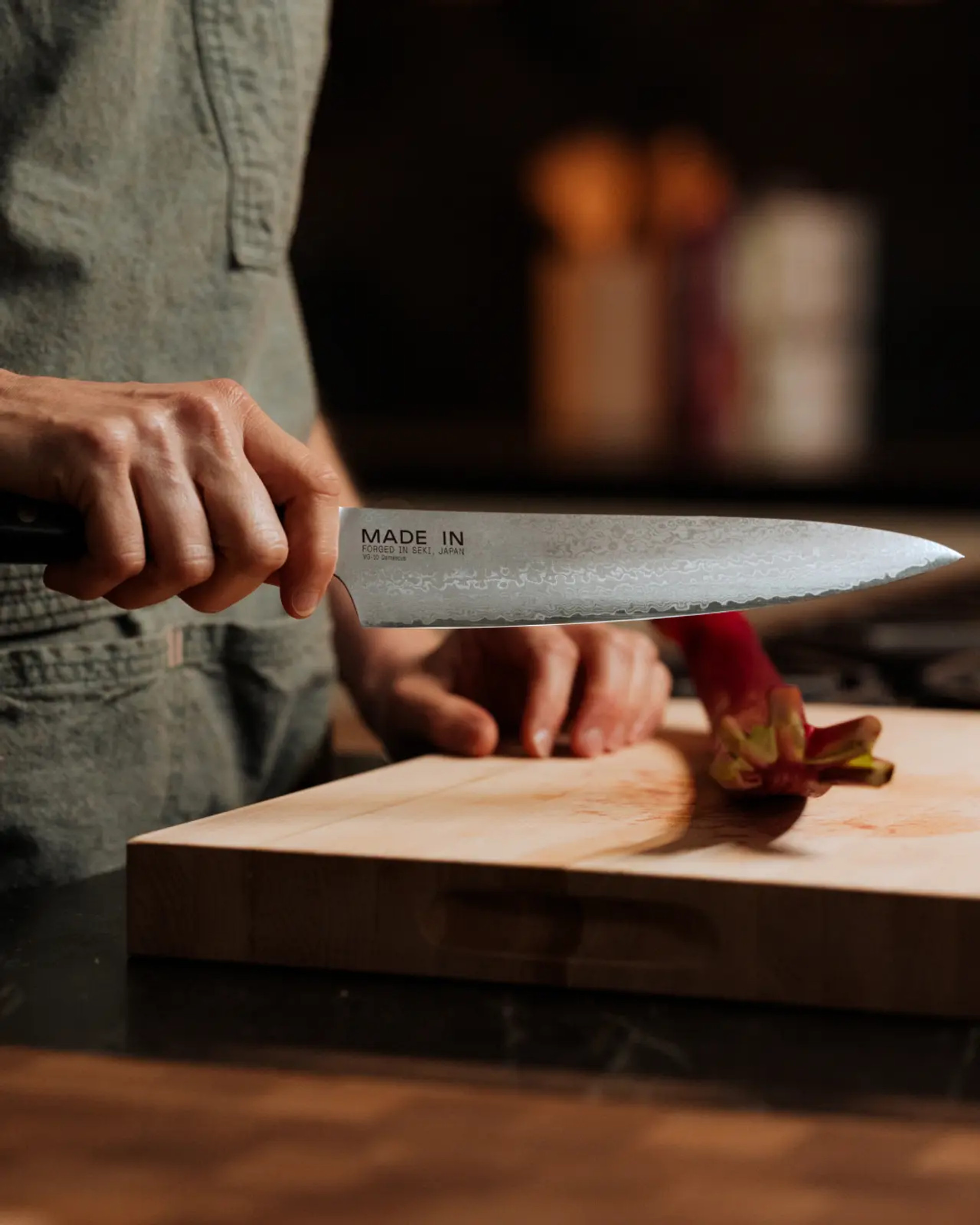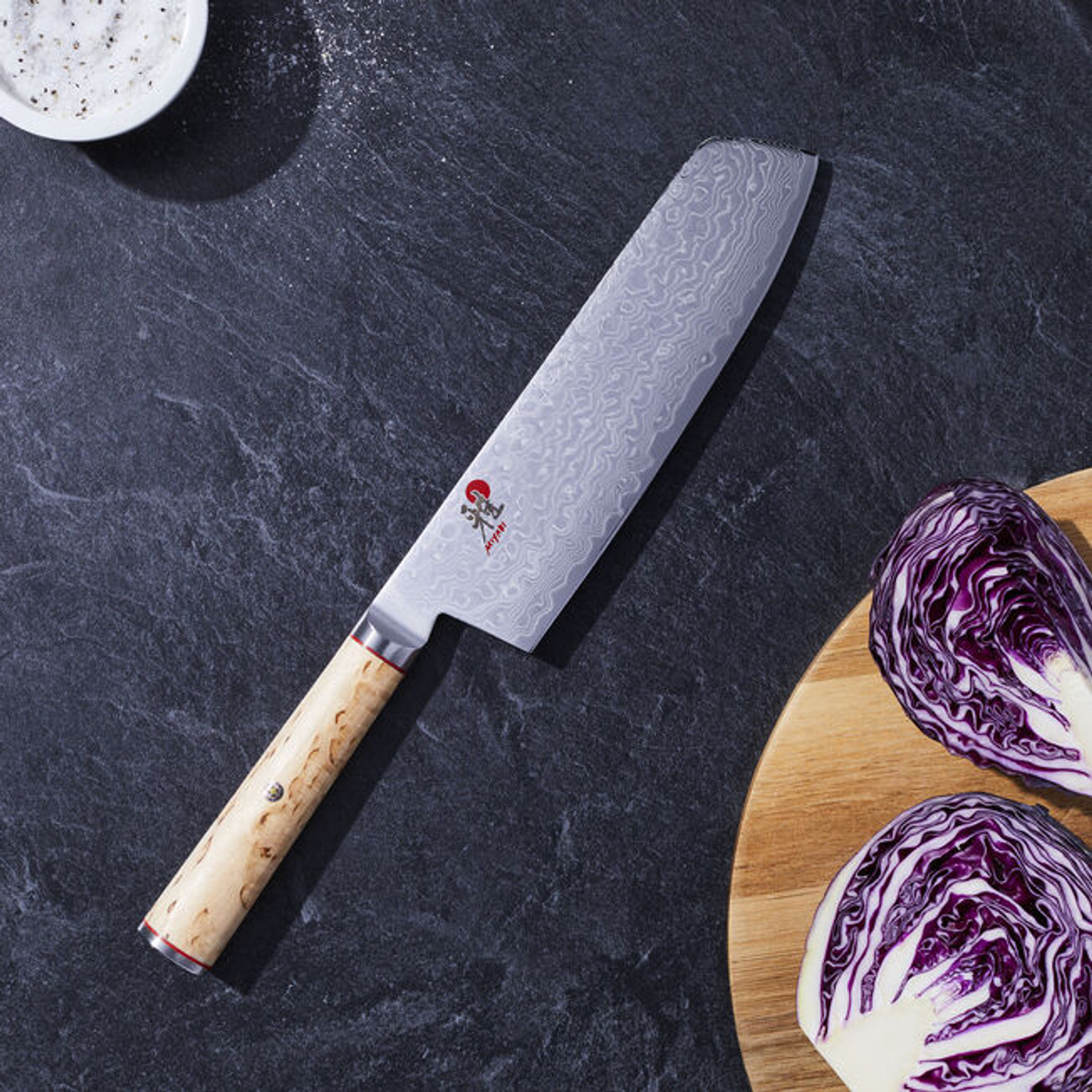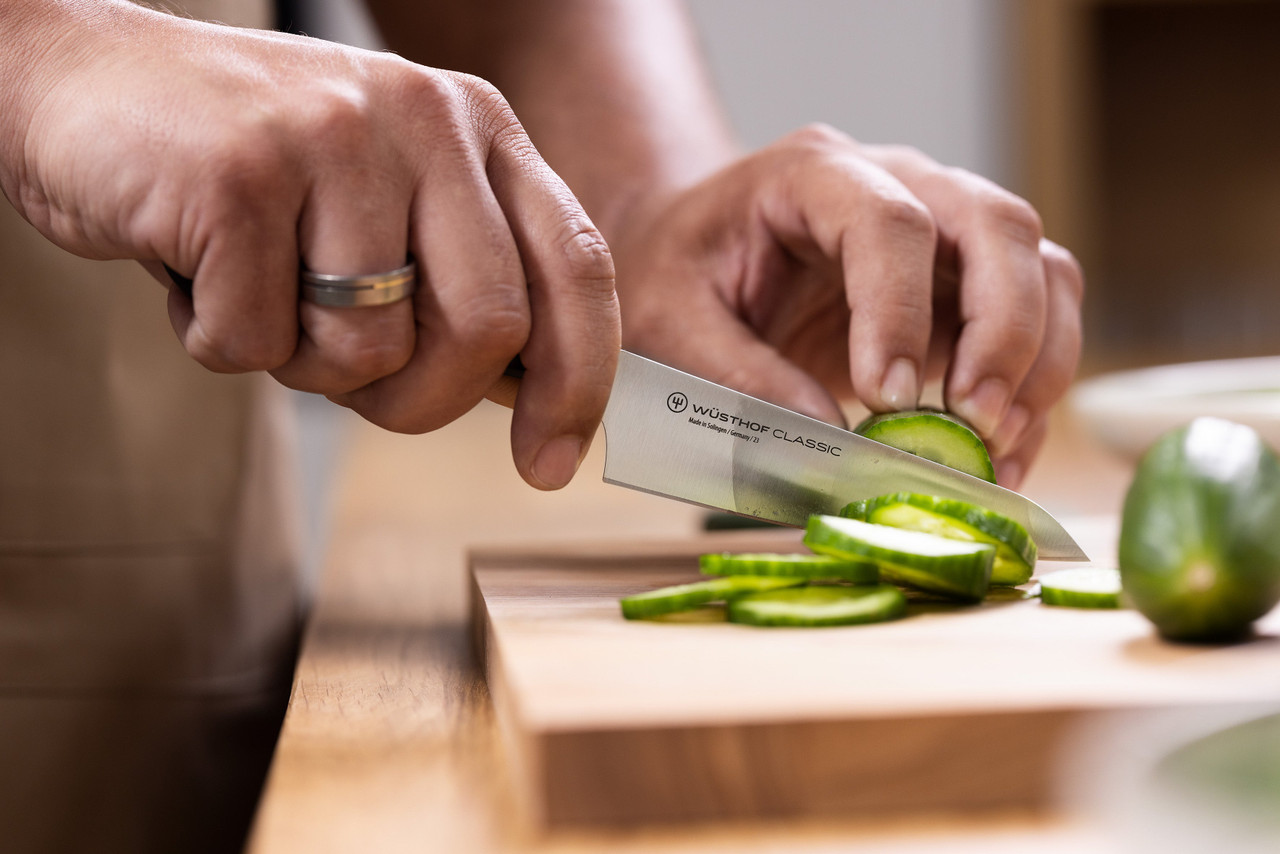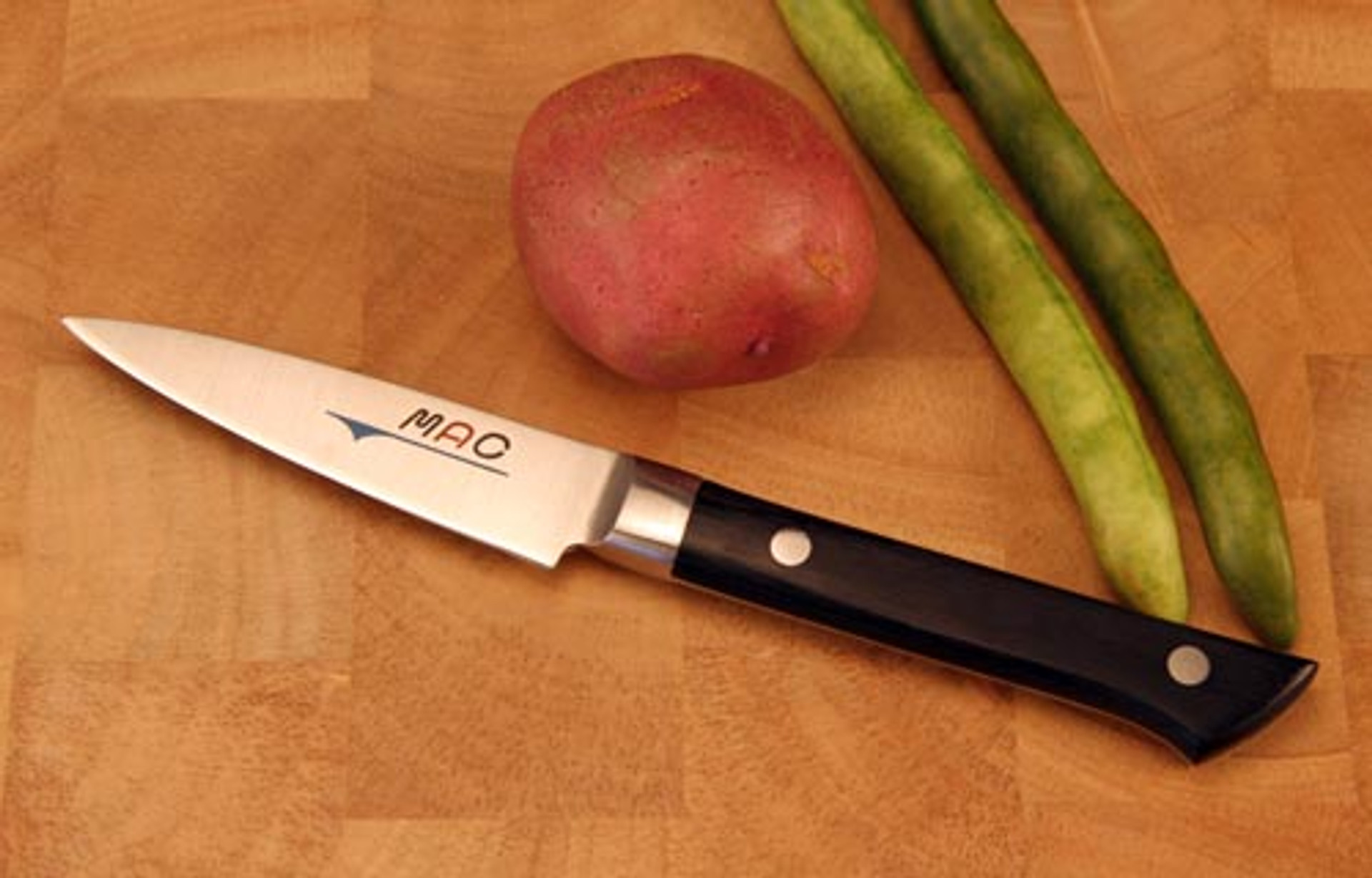Top 5 Chef Knives: Our Guide to Choosing the Right Blade for Every Cook
2025 Jul 15th
Let’s face it: no matter how experienced we are in the kitchen, nothing beats the feeling of holding a high-quality chef knife. From perfectly diced onions to clean-cut herbs and buttery-smooth slices of meat, the best chef knives aren’t just tools, they’re trusted companions. Whether you're just starting out or have years behind the cutting board, investing in the right knife changes everything.
In this guide, we’re bringing you everything we know (and love) about chef knives, from the top rated Japanese chef knives to the different types of chef knives we recommend having in your arsenal. We’ll also cover what to look for when buying professional chef knives and where to find the best chef knives in Canada.
Why Having the Best Chef Knife Matters
We’ve all been there. Hacking away with a dull, unbalanced knife, trying to prep for dinner. It’s frustrating, unsafe, and let’s be honest, kind of kills the joy of cooking. A good chef knife does the opposite: it brings confidence to your cuts, reduces prep time, and makes every task from mincing garlic to butchering a roast feel effortless.
From our experience in both home kitchens and professional setups, a high-quality chef knife offers:
- Efficient and precise cuts
- Better control and comfort (no more hand fatigue)
- Long-lasting edge retention
- A safer cooking experience
If there’s one thing you should never cheap out on in the kitchen, it’s your knife.
Top Rated Japanese Chef Knives
Japanese knives have a cult following and for good reason. They’re sharp, precise, and often beautifully handcrafted. If you’re someone who appreciates attention to detail and design, these are the knives worth exploring. We’ve tried and tested dozens, and here are our go-to top rated Japanese chef knives you’ll want to know about:
- Shun Classic 8-Inch Chef Knife

Made from VG-MAX steel with a D-shaped pakkawood handle, the Shun knife is incredibly sharp and great for precise, clean cuts. - MAC MTH-80 Professional Chef Knife

Lightweight, sharp, and easy to maneuver. The dimples on the blade help reduce drag, MAC MTH-80 is one of our team’s favorites for daily use. - Global G-2 Chef Knife

Sleek and seamless. The handle is part of the blade, offering great balance and control. Plus, Global G-2 is super easy to clean. - Tojiro DP Gyuto: Affordable, reliable, and razor-sharp. A great starter knife for anyone wanting to experience Japanese craftsmanship without breaking the bank.
- Yoshihiro VG-10 Gyuto: Handcrafted with layered steel and a VG-10 core. It’s a beautiful knife with serious performance to match.
Japanese knives typically have a thinner blade than Western ones, which means they require a bit more care, but deliver unmatched precision in return.
Types of Chef Knives You Should Know
When we talk about the types of chef knives, it’s not just about variety for the sake of it. Each one is designed for specific tasks and cooking styles. Here's a breakdown we wish we had when we first started out.
1. Western Chef Knife
This is your classic all-rounder. Usually around 8 inches, the Western chef knife has a curved blade that’s great for rocking cuts. If you’re only buying one knife, this is where we’d suggest starting.
2. Japanese Gyuto

Think of this as the Japanese version of the Western chef knife, but sleeker. The Gyuto is lighter, sharper, and designed for more delicate work. Many of us use this as our daily go-to.
3. Santoku Knife

Shorter than a Gyuto, the Santoku is perfect for fine slicing, mincing, and chopping. Its name literally means “three virtues” (slicing, dicing, mincing), and it lives up to the reputation.
4. Nakiri Knife

Strictly for vegetables, the Nakiri has a flat blade that allows you to chop right down without needing a rocking motion. Great for speed and accuracy, especially if you're prepping a lot of greens or root veg.
5. Utility Knife

Smaller and narrower than a chef knife, but bigger than a paring knife. Ideal for sandwiches, fruit, and trimming fat or sinew. Trust us, it fills a lot of in-between roles.
6. Paring Knife

Not a chef knife per se, but an essential companion. Perfect for peeling, coring, or any tiny detail work where precision is key.
What Makes a Knife “Professional”?
When we talk about professional chef knives, we’re not just referring to high price tags or fancy branding. A professional-grade knife should perform under pressure, day in and day out. Here’s what we look for when choosing knives for the professional kitchen or serious home use:
High-Quality Steel
We prefer high-carbon stainless steel or specialty Japanese steels like VG-10. They stay sharper longer and resist corrosion when properly cared for.
Edge Retention
There’s nothing worse than having to sharpen a knife every week. A good professional chef knife holds its edge through heavy prep and multiple services.
Comfort and Grip
Long shifts or extended cooking sessions demand comfort. Look for ergonomic handles, full tang construction (blade runs through the handle), and a non-slip grip.
Balance
A well-balanced knife feels like an extension of your hand. You shouldn’t have to fight it while cutting.
Where to Buy the Best Chef Knives in Canada
If you're shopping for chef knives in Canada, you're in luck: at Williams Food Equipment we offer a solid selection of high-quality options. Our range includes both Western and Japanese knives, catering to different preferences and needs. While we don't specialize exclusively in knives, our collection is carefully curated to provide great choices for both home cooks and professionals.

Before buying, we recommend holding the knife in your hand if possible. If not, read reviews carefully and look for detailed specs (especially weight, blade material, and handle style).
How to Choose the Best Chef Knife for You
Every cook is different. Some of us love the weight and power of a German knife, others prefer the finesse of a Japanese blade. Here’s what to think about when choosing your ideal knife:
1. Cooking Style
Do you break down whole chickens? Go Western. Do you love delicate fish prep? Japanese all the way. Are you a veggie fanatic? Nakiri or Santoku.
2. Hand Size & Comfort
A knife might be perfect on paper but feel wrong in your hand. Look for reviews mentioning hand size or try the knife in person if you can.
3. Maintenance Level
Western knives tend to be lower-maintenance and tolerate abuse. Japanese knives need more TLC, like careful honing and handwashing, but reward you with exceptional sharpness.
4. Budget
You don’t have to spend $300. There are amazing chef knives in the $80–$150 range that last a lifetime with proper care. If you're a pro or obsessive home cook, consider it a worthwhile upgrade.
Knife Care 101: Tips from Our Team
We can’t stress this enough: even the best chef knives need love. Here are our golden rules for keeping them in top shape:
- Always hand wash: no dishwashers, ever.
- Dry immediately: moisture causes rust, even on stainless blades.
- Use a honing rod weekly to keep the edge aligned.
- Sharpen properly: either learn to use a whetstone or get it done professionally. Read more on how to sharpen a knife the right way!
- Store safely: in a knife block, magnetic strip, or blade guard. Never loose in a drawer.
FAQ: Your Chef Knife Questions, Answered
What’s the best chef knife for beginners?
The MAC MTH-80 or Tojiro DP Gyuto. Both offer great value, are easy to maintain, and feel balanced without being intimidating.
Are Japanese knives really better?
“Better” depends on what you need. Japanese knives are sharper and more precise. Western knives are stronger and more forgiving. Many of us use both for different tasks.
How often should I sharpen my knife?
Depending on use, every 6–12 months. Honing regularly extends the time between sharpenings.
Do I need multiple chef knives?
One solid chef knife covers 80% of tasks. But pairing it with a Santoku or utility knife gives you flexibility for smaller or more specialized prep.
Final Thoughts
Choosing the best chef knives isn’t just about specs, it’s about what works for you. The right knife will improve your workflow, reduce fatigue, and make prep work feel like a pleasure rather than a chore. Whether you’re after top rated Japanese chef knives, exploring different types of chef knives, or looking to invest in professional chef knives locally through chef knives Canada retailers, the key is to pick something that fits your hand, your style, and your ambition in the kitchen.
We hope this guide helped sharpen your understanding (pun intended) of what to look for. If we missed your favorite blade, let us know, because when it comes to knives, we’re always hungry for more.


